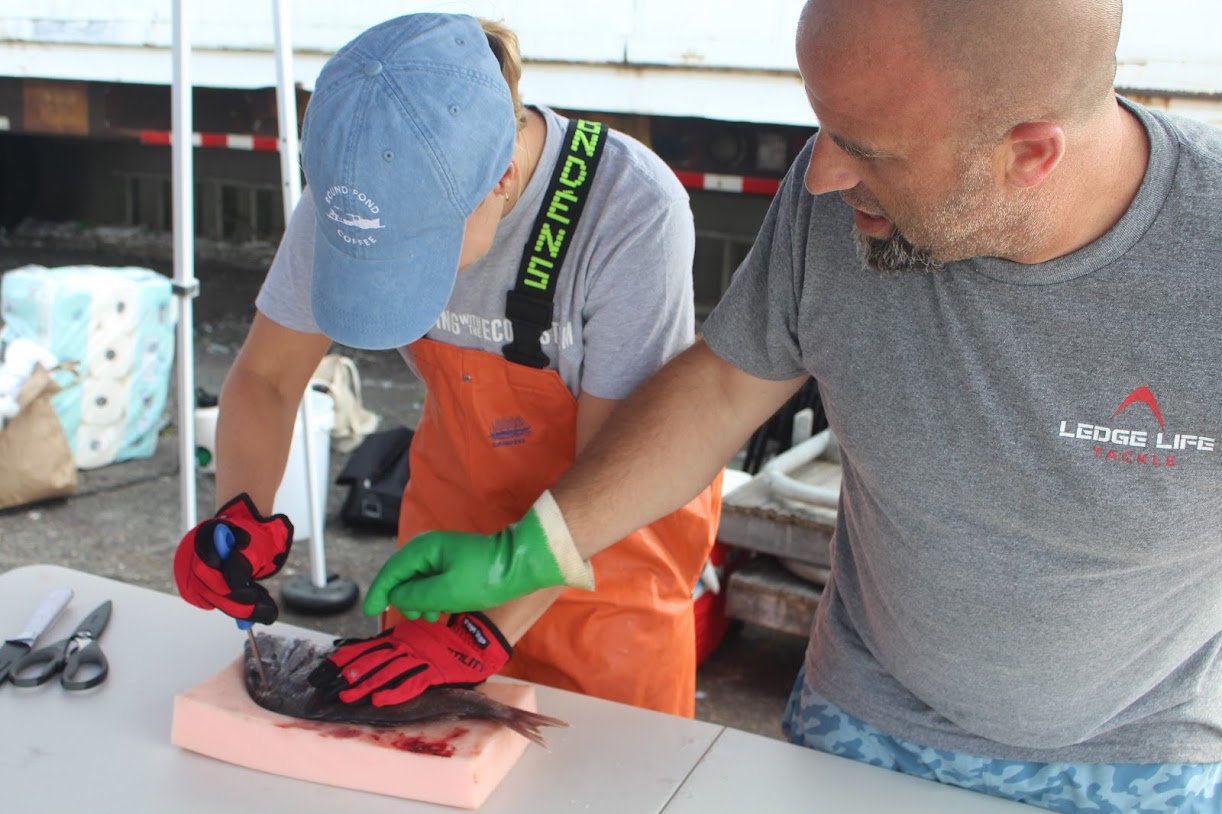Sustainable, Creative Food Systems Can Mitigate Effects of Climate Change
February 5, 2024
KINGSTON, R.I. — New England needs to build a more resilient food system and develop sustainable fishing practices if it hopes to feed its residents in the coming years while staving off the impacts of climate change.
That was the message at the eighth annual Rhode Island Food System Summit, held virtually in January and hosted by the University of Rhode Island: From Seed to Shore: Powering Environmental Stewardship Through Innovative Food Practices. The summit included panel discussions with academic experts and local industry leaders and a keynote address from Janet Coit, NOAA’s assistant administrator for fisheries and a former director of the Rhode Island Department of Environmental Management. She spoke about NOAA’s plans to implement a national seafood strategy, including efforts to sustainably manage marine fisheries and produce seafood responsibly.
Julianne Stelmaszyk, director of food strategy for the Rhode Island Commerce, discussed building resilience within the state’s renewed food strategy and provided an update on its development.
“We’re rapidly losing farmland, let alone expanding farmland to grow more food,” she told ecoRI News last year. “We have to decide how we balance our investment in our working lands and working waters and our food system with our other priorities around economic development and housing and renewable energy, which are all equally important.”
URI’s Business Engagement Center (BEC) and the Rhode Island Food Center organized the event.
“Farmers and fishermen are experiencing significant impacts due to climate change so we wanted to look at these issues more closely through this year’s event,” BEC executive director Katharine Hazard Flynn said.
Coit discussed the dramatic impacts of climate change on marine life and ecosystems, which, in turn, affect the businesses and coastal communities that depend on them. According to Coit, the U.S. seafood sector supports hundreds of billions of dollars of economic activity, 1.2 million jobs, and generates $165 billion in sales of seafood across the broader economy.
“Climate change is affecting the sustainability of our marine life, including the seafood that we eat and grow,” she said.
Coit detailed how warming waters are affecting the location and productivity of fish stocks worldwide, citing lobsters leaving Narragansett Bay, the collapse of the commercial winter flounder industry in Rhode Island, and the growth of cobia — a tropical fish — as an emerging fishery, as local examples.
“Most Americans are unaware that more than 50 percent of the seafood produced globally for human consumption is farmed, not fished — so seafood farming and aquaculture is one of the most resource-efficient ways to produce protein and it has helped to improve nutrition and food security in many parts of the world. But it is seriously underutilized in the U.S.,” Coit said.
In addition to supporting a domestic seafood economy now and into the future, NOAA’s national seafood strategy is committed to leveling the playing field for U.S. fishers and seafood farmers. Its four pillars are: maintaining and/or increasing sustainable wild capture production; increasing sustainable aquaculture production; fostering access to domestic and global markets for the U.S. seafood industry; and strengthening the entire sector with an eye toward infrastructure — e.g., ports, hatcheries, vessels, processing facilities.
Coit spoke about kelp farming as a sustainable crop and an innovative practice that has been shown to help reduce ocean acidification — a byproduct of fossil fuel burning and other human activity. She also gave a nod to URI’s PRESS Initiative (Partnership for Research Excellence in Sustainable Seafood) as an example of a collaborative science-based approach to responding to the challenges faced by coastal communities.
A panel on sustainable seafood production challenges and solutions detailed several projects funded through the PRESS Initiative. Funded by a four-year, million-dollar NOAA grant and led by Marta Gomez-Chiarri, professor of aquaculture/fisheries in URI’s College of the Environment and Life Sciences, the program provides funding to projects proposed by teams of industry members and researchers that seek to solve challenges to addressing seafood security.
Stelmaszyk discussed the need to build a more resilient food system, as 90% of the food we eat comes from outside New England — and much of it comes from climate-risk areas such as California and the Midwest. Disruptions in the supply chain that result in higher prices and shortages tend to hit communities of color harder than white households. Black and Hispanic households in Rhode Island are three times more likely to experience food insecurity, according to Stelmaszyk.
“The good news,” she said, referring to regenerative farming practices, “is that food is part of the solution. We know that healthier topsoil can hold water better during times of drought and filter it like a sponge during flooding. It’s a great example of a nature-based solution.”
Representatives from Newport’s Ocean Hour Farm discussed regenerative practices on their farm as they relate to ocean health. According to NOAA, 80% of pollution to the marine environment comes from the land. The farm was founded in December 2021 with the idea that ocean stewardship begins on land with the mission to be a center for education and scientific research around regenerative agriculture and land management practices.
Stelmaszyk also moderated a panel on regenerative agriculture featuring URI’s Patrick Bauer, assistant professor of food systems policy and innovation, and representatives of Little Compton’s Sweet & Salty Farm, Earth Care Farm in Charlestown, and Ashawaug Farm in Hopkinton, which are all employing regenerative practices in their work such as composting and crop and pasture rotation to help improve soil health.
The panel discussed some of the challenges to implementing regenerative practices, including criticisms that it is not scalable and is skill and labor intensive. The panelists also noted increased interest among young people in becoming involved in tangible solutions to big-picture environmental crises. After more than a century of taking people out of agriculture, however, moving people back in and creating highly diverse food systems is also a process.
“It is incumbent upon us,” Bauer said, “to think about how we frame the kind of work and careers that young people can have — that this is an exciting and innovative field to go into that encompasses a lot of different kinds of work.”
From infrastructure and supply chain to marketing, cultural and educational work, he said, “there is so much work that needs to be done and so many opportunities.”




What we need to do in RI is take what these folks are doing in one tiny sector of the economy and push that way of acting throughout the economy. For more check out https://prosperityforri.com/about-us/f/a-climate-justice-economythe-only-way-forward-2024